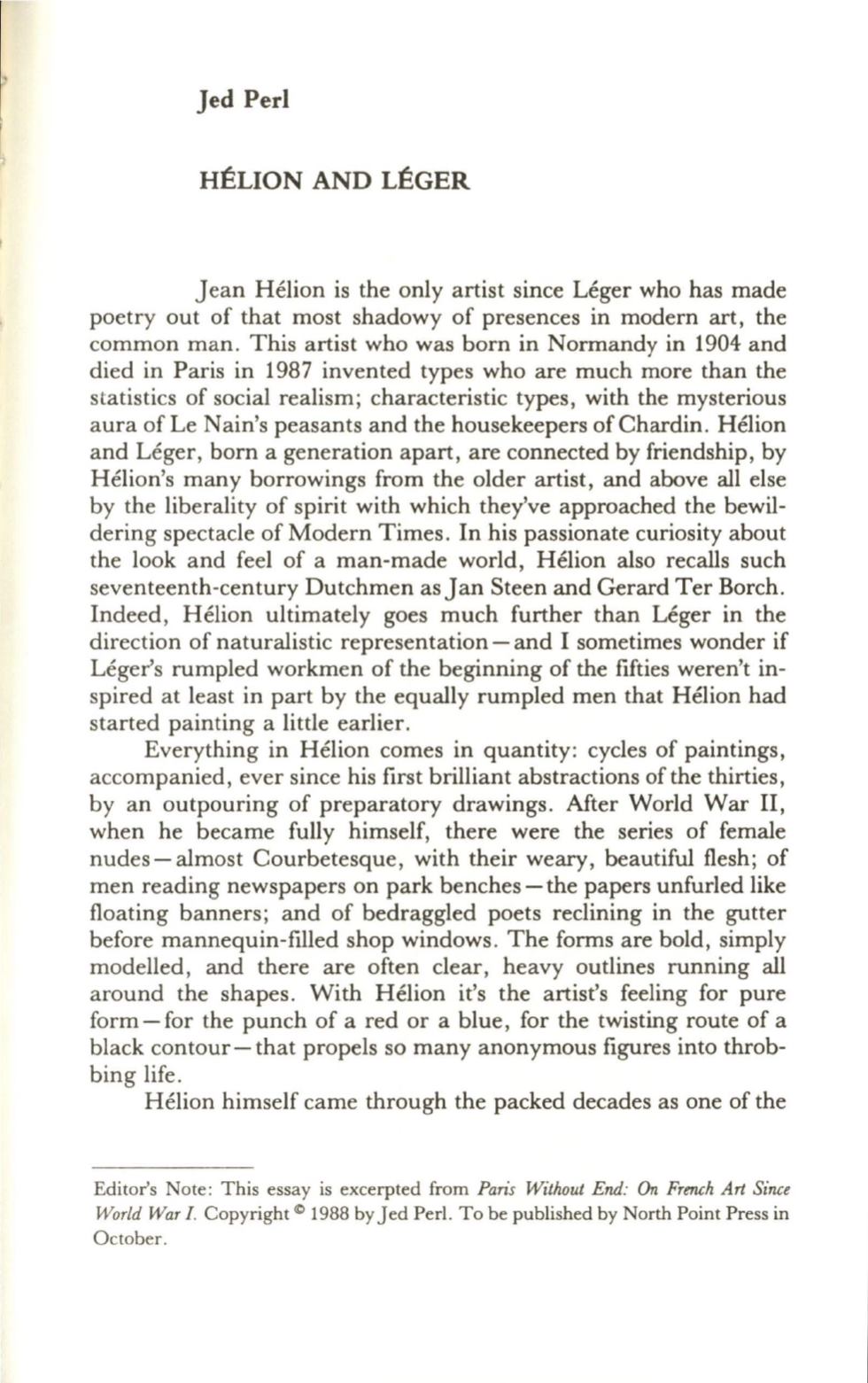
Jed Perl
HELION AND LEGER
Jean Helion is the only artist since Leger who has made
poetry out of that most shadowy of presences in modern
art ,
the
common man. This artist who was born in Normandy in 1904 and
died in Paris in 1987 invented types who are much more than the
statistics of social realism; characteristic types, with the mysterious
aura ofLe Nain's peasants and the housekeepers of Chardin. Helion
and Leger, born a generation apart, are connected by friendship, by
Helion's many borrowings from the older artist, and above all else
by the liberality of spirit with which they've approached the bewil–
dering spectacle of Modern Times . In his passionate curiosity about
the look and feel of a man-made world, Helion also recalls such
seventeenth-century Dutchmen asJan Steen and Gerard Ter Borch .
Indeed , Helion ultimately goes much further than Leger in the
direction of naturalistic representation - and I sometimes wonder if
Leger's rumpled workmen of the beginning of the fifties weren't in–
spired at least in part by the equally rumpled men that Helion had
started painting a little earlier.
Everything in Helion comes in quantity: cycles of paintings,
accompanied, ever since his first brilliant abstractions of the thirties,
by an outpouring of preparatory drawings. After World War II,
when he became fully himself, there were the series of female
nudes-almost Courbetesque, with their weary, beautiful flesh; of
men reading newspapers on park benches - the papers unfurled like
floating banners; and of bedraggled poets reclining in the gutter
before mannequin-fIlled shop windows. The forms are bold, simply
modelled , and there are often clear, heavy outlines running all
around the shapes. With Helion it's the artist's feeling for pure
form - for the punch of a red or a blue , for the twisting route of a
black contour - that propels so many anonymous figures into throb–
bing life.
Helion himself came through the packed decades as one of the
Editor's Note: This essay is excerpted from
Paris Without End:
On
French Art Since
World War
I.
Copyright
0 1988
by J ed Perl. T o be published by North Point Press in
October.


